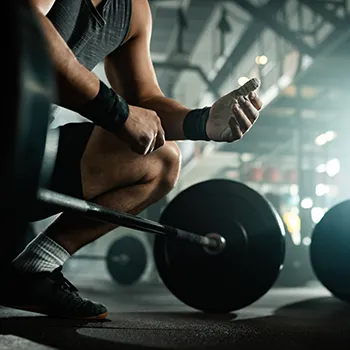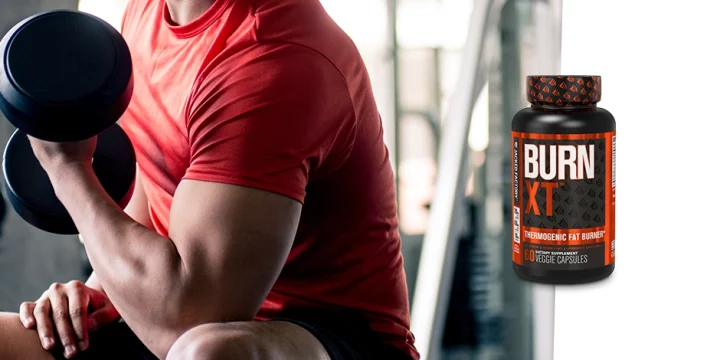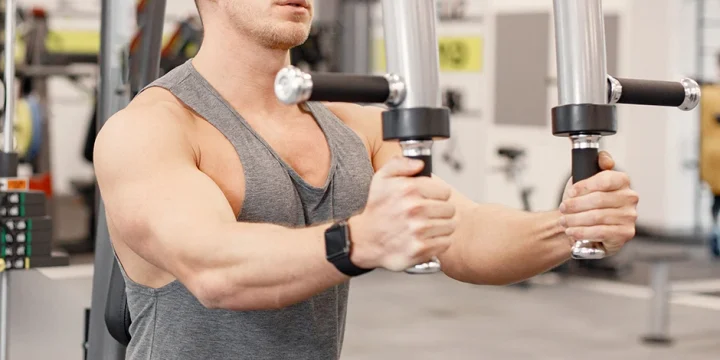One of the questions my new fitness clients often ask me is whether lifting weights burns many calories.
I have spent countless hours at the gym guiding clients, and in that time, the most significant changes in body composition were always a result of resistance training. And not just in terms of muscle mass, but fat percentage as well, which directly translates to burning calories.
I also dived deeper into the scientific literature to see what the exact metrics say, so read on to explore this subject with me.
Quick Summary
- Weightlifting burns between 90 to 252 calories every 30 minutes, varying with body weight and workout intensity.
- To increase calorie burn, focus on lifting lighter weights with more reps, use circuit training, and engage multiple muscles.
- According to Harvard Health Publishing, heavier individuals burn more calories weightlifting due to the increased effort required.
- In my experience, combining weightlifting with a balanced diet is key for effective weight management and muscle growth.
How Many Calories Are Burned During Weight Lifting?

How many calories you burn during weight lifting can vary depending on your body weight and the intensity and duration of your strength training session.
On average, 30 minutes of weight lifting can burn between 90 and 252 calories depending on body weight and the intensity of your workout.
What Is Weight Lifting?
Weight lifting is a type of strength training that uses weight for resistance.
Lifting weight provides stress to muscles, and over time, those muscles adapt and become stronger, bigger, and more defined.
Duration and Effort
Along with your body weight, duration and effort are significant factors in how much of a caloric burn you will experience during a weightlifting workout.
Calorie Burning Potential

According to Harvard Health Publishing’s chart on activity and calories burned, people who weigh more burn more calories lifting weights when all other variables are the same [1].
This data aligns with what I observe in my practice. Individuals with a heavier body weight often burn more calories during activities. This is because they require more effort and energy to move their weight, especially if their muscles are somewhat inefficient and not frequently exercised.
The range of caloric burn lifting weights can vary drastically in relation to body weight, with duration and effort as additional factors.
Calories Burned Weight Lifting vs. Doing Cardio
Both cardiovascular and anaerobic exercises are effective for burning calories, albeit through different mechanisms. I recommend including high-intensity interval training in your routineas it's an excellent strategy to optimize calorie burn.
An individual cardio session can use up more calories than a session of weightlifting exercises of the same duration. However, strength training leads to higher calorie expenditure in the long run.
Why?
Because lifting weights promotes muscle-building, muscle is a very energy-hungry tissue. Increasing lean body mass boosts your metabolic rate and calories you burn both moving and while at rest.
Build muscle so you can burn additional calories inside and outside the gym.
“The number of calories you burn during exercise depends on your body size and how intensely you exercise. Typically, a cardio workout burns more calories than a weight training workout of the same duration.”
-Grant Tinsley, Ph.D.
3 Ways to Maximise Calories Burned Through Strength Training

I have learned a few things along the way that helped me and my clients burn as many calories as possible doing strength exercises, which ultimately led to losing weight and often outstanding muscle gain.
Here are my top three tips to help you increase calories and fat burn while lifting weights.
1. Less Weight, More Reps
We have established that lifting heavier weights can increase calorie burn long-term, which doesn’t mean lighter weights don’t have their place.
Switching up your strength training sessions between more weight, fewer reps, and less weight, more reps can maximize your efforts.
Lifting lighter weights for more reps can improve your muscular endurance and how long your muscles can work against resistance, increasing calorie burn in the short term.
2. Use More Muscles
Gaining muscle requires both resistance exercises and a consistently healthy diet.
Resistance exercises to increase muscle must incorporate compound and isolation movements, targeting specific muscle groups.
Exercises, sets, and reps will need to be adjusted to maintain consistent gain in muscle size and strength long-term.
3. Implement Circuits
Circuit training can offer you variety and flexibility in your strength training sessions. Ideally, you should pick five to ten resistance training exercises that will result in a full-body workout.
Your weightlifting choice—heavy or light—hinges on your goals. For muscle gain, go heavy with more calories.
Lighter weights? They're less effective for muscle but up your workout's aerobic ante.
Remember, high-intensity interval training torches calories, so tweak your diet to really bulk up.
Weight Lifting vs. Other Forms of Exercise
Weightlifting primarily builds muscle through anaerobic activity, burning fewer calories per session compared to aerobic exercises like running, swimming, or cycling.
- Running, depending on pace and terrain, can burn a significant amount of calories, often exceeding 600 calories per hour.
- Swimming, engaging multiple muscle groups and providing resistance through water, also has a high calorie burn, roughly 400-700 calories per hour based on intensity.
- Cycling, at a moderate pace, typically burns around 400-600 calories per hour.
However, weightlifting increases muscle mass, which can boost resting metabolic rate, leading to more calories burned overall, even when not exercising.
FAQs
How Many Calories Do You Burn In A 45-Minute Weight Lifting Session?
In a 45-minute weight lifting session, you can burn anywhere from 100-600 calories on average. However, how many calories exactly will depend on your body weight and intensity.
Do You Burn More Calories If You Lift Heavier Weights?
You burn a higher number of calories when you lift heavier weights. By choosing heavier weights, you also burn more body fat during and after your weight lifting session.
Do not let how much weight you choose to lift impede correct form, as this can lead to injury. It may be best to start with light weights and gradually increase weight over time.
References:
- https://www.health.harvard.edu/diet-and-weight-loss/calories-burned-in-30-minutes-for-people-of-three-different-weights
About The Author
You May Also Like






